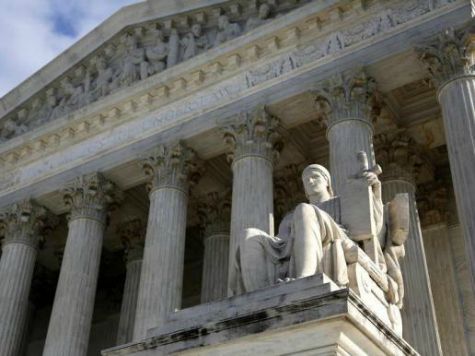Traffickers in child pornography must pay restitution to the children victimized by their crimes, but only to the extent that the government can show each trafficker’s connection to the video images in question. So said the Supreme Court on April 23 in a 5-to-4 decision in Paroline v. United States.
Doyle Randall Paroline pleaded guilty to possessing child pornography. Congress passed a 1994 law that enabled the victims of this crime–those who were underage when they appeared in pornographic pictures or videos–to claim restitution from those involved in trafficking in the illegal and obscene images.
The victim is “Amy” (her pseudonym for this case), seen in videos Paroline possessed. She sought a court order for Paroline to pay her $3.4 million, mostly for lost income, and the rest for years of future treatment and counseling.
Section 2259 of the law that Congress passed requires federal trial courts to order defendants “to pay the victim … the full amount of the victim’s losses as determined by the court.” Writing for the majority, Justice Anthony Kennedy said the issue here is how to determine the amount of restitution a possessor of child pornography must pay to the victim whose childhood abuse appears in [the videos].”
Kennedy was joined by Justices Ruth Bader Ginsburg, Stephen Breyer, Samuel Alito, and Elena Kagan. This was an unusual mix of liberal and conservative justices in this 5-to-4 split decision.
Kennedy described the challenge as determining which injuries were proximately caused by Paroline. That is to say, out of all the harm that Amy suffered, how much of it falls on Paroline, as compared to everyone else who produced, distributed, sold, bought, and watched the videos containing Amy.
On one hand, Paroline must pay. But if certain legal principles of fault are carried too far, it could place full blame on only one person, when, in fact, many are responsible. That could cause a problem under the Eighth Amendment’s ban on “excessive fines.”
The Supreme Court held that courts must determine how much of the total harm any given criminal they convict should have to compensate the victims. Kennedy said there is no “mathematical formula” to arrive at a dollar amount, so federal district courts must use “discretion” and “sound judgment.” He noted such an approach has its own difficulties, but that courts routinely balance such competing concerns when ordering criminals to pay restitution to their victims.
Chief Justice John Roberts dissented, joined by Justices Antonin Scalia and Clarence Thomas. Discussing the majority’s approach, he said, “But this inquiry, sensible as it may be, is not the one Congress adopted.” Instead, Roberts reasoned, the statute requires the government to prove by a preponderance of the evidence (meaning more than 50-50 odds) the dollar amount of harm the victim suffered, and that is the amount of restitution to be ordered. He then noted that the government admitted it did not have enough evidence to prove the amount of harm caused by this one criminal possessing the pornography depicting Amy. So he dissented, adding that he regretted having to do so.
Roberts concluded his dissent:
The Court’s decision today means that Amy will not go home with nothing. But it would be a mistake for that salutary outcome to lead readers to conclude that Amy has prevailed or that Congress has done justice for victims of child pornography. The statute as written allows no recovery; we ought to say so and give Congress a chance to fix it.
Justice Sonia Sotomayor dissented separately. She would have ordered Paroline to pay restitution for all of Amy’s injuries, which could be the full $3.4 million.
Ken Klukowski is senior legal analyst for Breitbart News. Follow him on Twitter @kenklukowski.

COMMENTS
Please let us know if you're having issues with commenting.